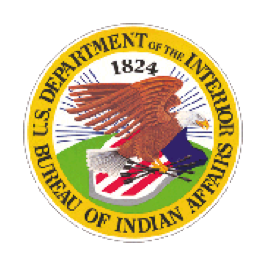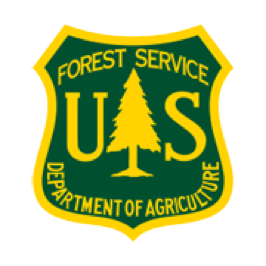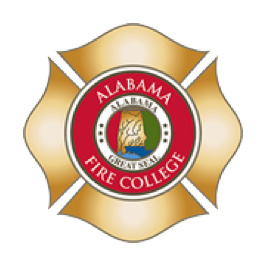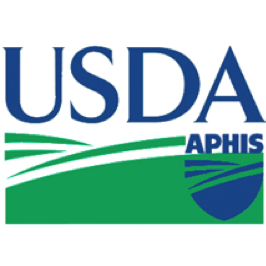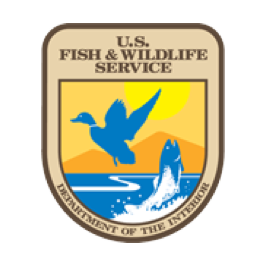Tribal Highlight: National Fish & Wildlife Foundation National Coastal Resilience Fund
In September 2023, NAFWS staff reviewed the National Fish & Wildlife Foundation (NFWF), National Coastal Resilience Fund (NCRF) projects. NCRF funding aimed at restoring, increasing, and strengthening natural infrastructure to protect coastal communities while also enhancing habitats for fish and wildlife. “Since 2018, the fund has been investing in conservation projects that restore or expand natural features such as coastal marshes and wetlands, dune and beach systems, oyster and coral reefs, forests, coastal rivers and floodplains, and barrier islands that minimizes impacts of storms and other naturally occurring events in nearby communities.” National Coastal Resilience Fund | NFWF.
The Native American Fish & Wildlife Society (NAFWS) served as a field liaison for the NCRF funding in 2023, via contract with Throwe Environmental. Throwe Environmental – Building community resilience (throwe-environmental.com). To wrap up the contract work in 2023, Robert Romero, Deputy Executive Director for the NAFWS visited the Sault Tribe of Chippewa Indians; following the NAFWS Great Lakes Regional Conference that was held at the Kewadin Resort and Casino in Sault Ste. Marie, Michigan and; in a separate trip, Laurel James, Director of Programs for the NAFWS visited both the Lummi Nation and the Tulalip Tribes in Western Washington State.
These projects, aimed at coastal resilience aimed at address high priority areas that incorporate adaptive responses to sea-level rise, coastal erosion, flood risk, water quality, salmon, shellfish harvest, instream flows and protection of potable groundwater systems. Projects are part of a Climate Change Mitigation and Adaptation Planning or a Nature-Based solution approach to Flood Hazard Management while addressing critical needs within their shoreline infrastructure. The commonality between these projects is that they focused on Cultural, Ecological, and Commercial values/interests, for the benefit of their tribal nations. We have highlighted their excellent work below.
THE SAULT TRIBE OF CHIPPEWA INDIANS
NATIONAL COASTAL RESLIENCE FUND
The Sault Tribe of Chippewa Indians Wildlife Program received funding in 2021, St. Marys River Coastal Wetland Resilience (MI) to engage multi-agencies in their NFWF NCRF planning grant that focuses on prioritizing Great Lakes Coastal Wetlands (GLCW) within the Saint Marys River (SMR) for restoration and conservation.
The SMR holds cultural, subsistence, recreational, medicinal, and commercial significance for Sault Tribe and communities of the eastern Upper Peninsula. Despite its importance, the SMR faces many challenges including water level fluctuations, development, freighter traffic associated with the Soo Locks, storm events, wakes from ships, shoreline erosion, and invasive species all leading to coastal wetland habitat degradation. The end goal was to produce an inter-agency resilience plan for the SMR that will guide future work. Their work also aims to set up a network of governmental (including Tribal, State, and Federal) agencies, Non-Governmental Organizations (NGOs), universities, stakeholders, and subject matter experts, to share stewardship of coastal wetlands. All the planning is working towards adaptive management of the St. Marys River while building communication and modeling collaborative and transparent conservation planning amongst stakeholders. Specific species of significance include Black tern (threatened in Michigan) management, re-seeding Menomen/manoomin (wild rice) and enhance the resources for continued tribal harvest.
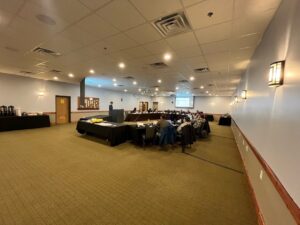
Recent Workshop that kicked off the facilitated Structured Decision-Making Process- over twenty agencies participated.
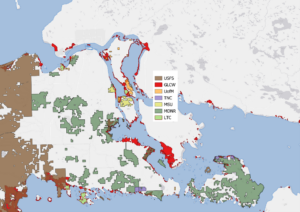
GLCW= Great Lakes Coastal Wetlands
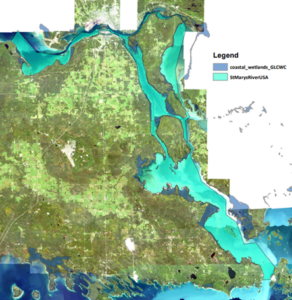
GLCW= Great Lakes Coastal Wetlands
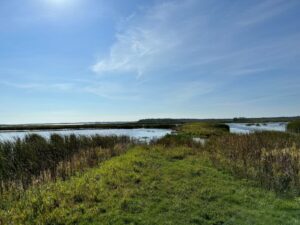
View of Munuscong Bay, the largest bay in the SMR, from the fragmented dike system.
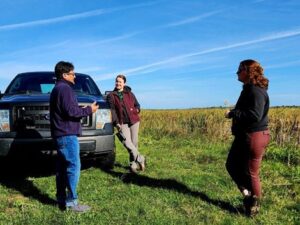
L-R: Robert Romero (NAFWS), Danielle (Dani) Fegan (FWS), and Katelyn Schultz (Sault Tribe)
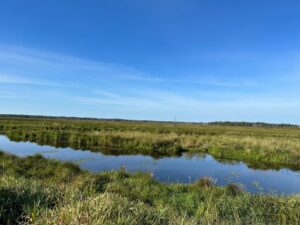
View of Great Lakes Coastal Wetland situated in the SMR.
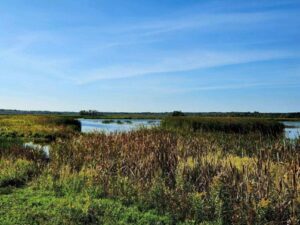
View of cattail (Typha) which has invaded the SMR.
TULALIP TRIBES
NATIONAL COASTAL RESILIENCE FUND PROJECT
The Tulalip Tribes received funding in 2022 for their project entitled Assessing Nature-Based Solutions to Improve Flood Hazard Management.
Some of their critical needs also address the protection of traditional, cultural, and historical properties, such as a Longhouse (Figure 2 Historical Longhouse) that is in jeopardy, due to bank erosion (Figure 3 Bank Erosion, threatening Historical Longhouse. The Tribe has accomplished some major achievements, including removing homes along their shoreline and beginning to restore the beach (Figure 4 Shoreline Restoration, Home Removal Site). The Tulalip Tribes || Home (tulaliptribes-nsn.gov)
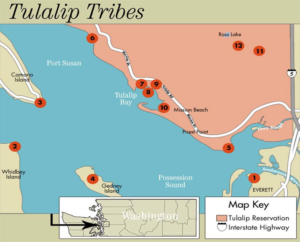
Tulalip Tribes, Washington State
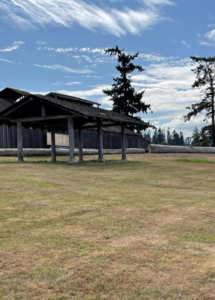
Historical Longhouse
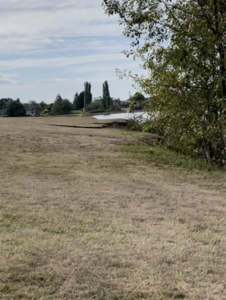
Bank Erosion, threatening Historical Longhouse
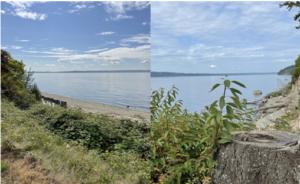
Shoreline Restoration, Home Removal Site
THE LUMMI NATION
NATIONAL COASTAL RESILIENCE FUND PROJECT
The Lummi Nation, located at the mouth of the Nooksack River Watershed received funding in 2021 for their project entitled Creating a Coastal Resilience Plan for the Lummi Reservation from the NFWF NCRF grant program.
During the visit, the Tribe identified their extensive need for continued work on coastal resilience efforts, as flooding, sea level rise, urban sprawl and coastal erosion threaten their local tribal community, their safety and subsistence needs. Flooding is a major issue for residents of the Lummi Nation and Lummi Island, often limiting or stopping ingress and egress. These factors threaten their cultural and traditional ways of life. When combined with the arrival of the invasive European Green crab (Caricinus maenas) in the Lummi Nation tidelands, the threats to their tribal subsistence and commercial harvest of salmon, clams and oysters within Lummi Bay are in danger.
Some of the on-going restoration highlighted are within the Smugglers Slough area. These areas include previous farmlands that have been replanted as part of a long-term, restoration plan aimed at: improving connectivity and water quality, lowering water temperatures, and creating wetlands that will filter bacteria levels downstream.
Funding from the NFWF NCRF grant program will help create a plan to further prioritize strategies to continue coastal resilience efforts to improve quality of life and protect resources for tribal members. Lummi Nation website: Lummi Nation (lummi-nsn.gov)
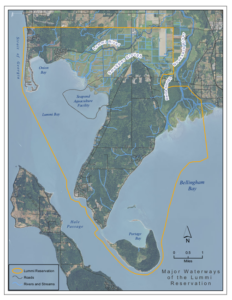
Lummi Nation Reservation, Washington State
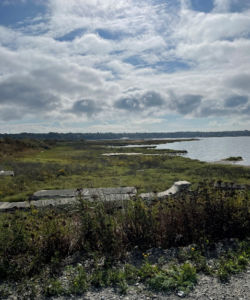
Lummi Bay, Aquaculture Ponds
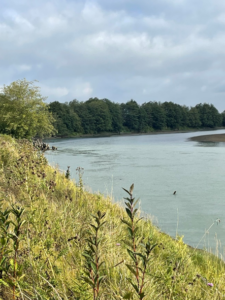
Nooksack River
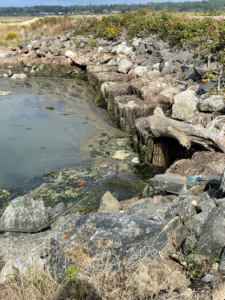
Smugglers Slough Tidegates (repair needed)
For more information, the NFWF, National Coastal Resilience Fund contact us.
Staff & Interns – Native American Fish and Wildlife Society (nafws.org)
Laurel James, Director of Program
Robert Romero, Deputy Executive Director
National Coastal Resilience Fund | NFWF.
Miriam Kuzee, Program Director, Coastal Resilience [email protected]
Arielle Mion, Program Manager, Coastal Resilience [email protected]
Christine Latil, Program Coordinator, Coastal Resilience [email protected]
